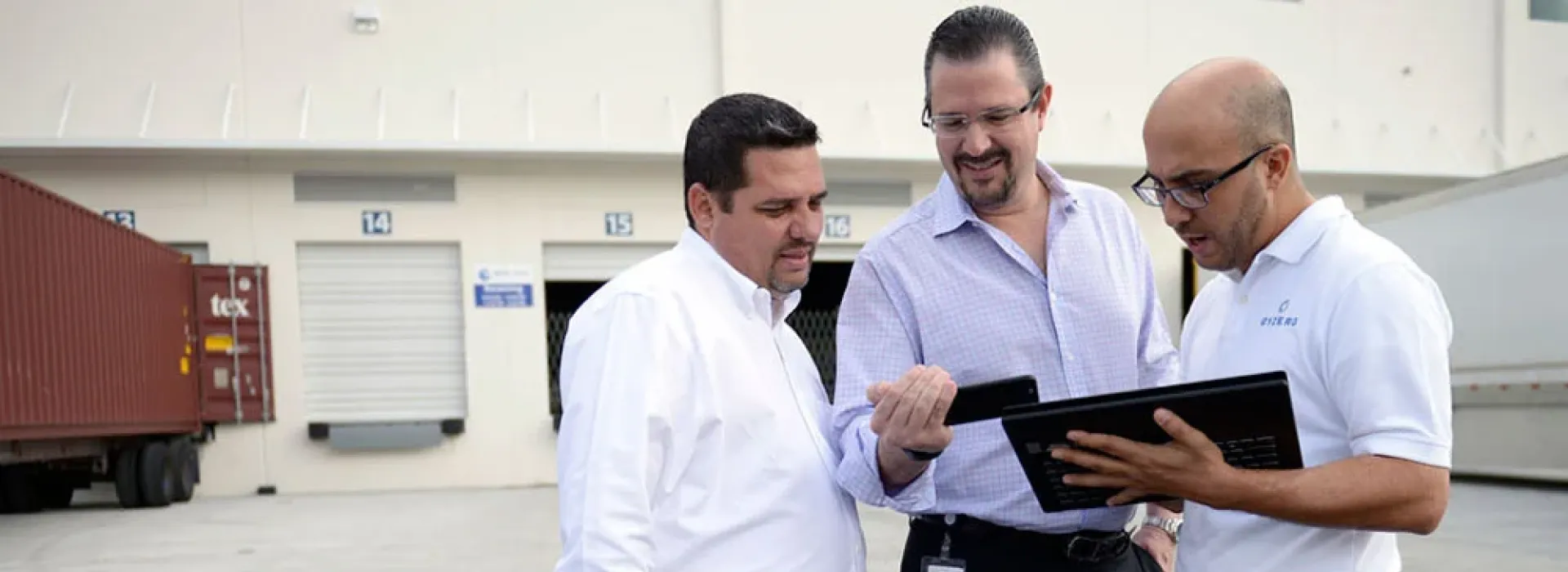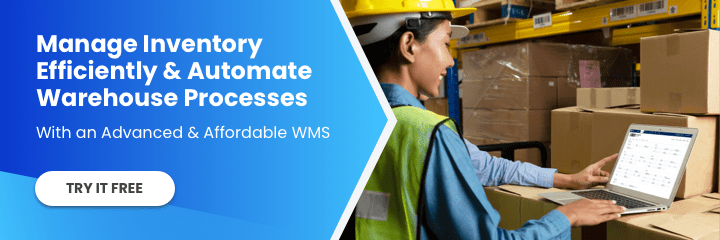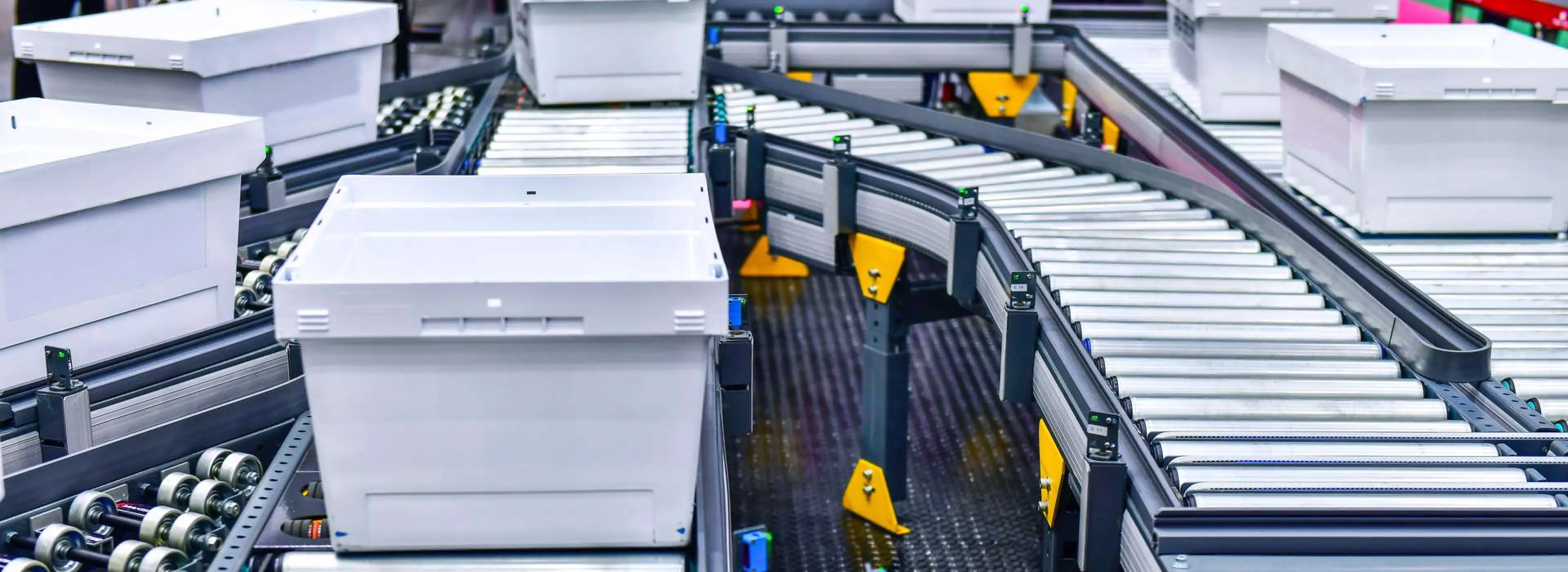As consumers’ use of technology increases, today’s supply chains face conflicting demands: be better, be faster, and be cheaper. According to the 2015 MHI Annual Industry Report, the top three issues supply chain leaders find very or extremely challenging are customer pricing pressure, demands for faster response times, and rising customer service expectations.
Download Guide: 7 Technologies That Will Help You Overcome Warehouse Challenges
Innovative technology solutions for the logistics industry can alleviate these challenges—and some are easier to adopt than others, particularly wearable and mobile technologies.
Mobile technologies were identified by the U.S. Roadmap for Material Handling & Logistics as the next driving force in the progression of supply chain management. Though still in the early stages of adoption, the mobile technology market is exploding. MHI reports a projected growth of 38% year-on-year between 2013 and 2018. Manufacturers, distributors, and their partners are experimenting with the introduction of wearable and mobile technologies within their supply chain because these technologies allow for convenient and immediate access to information by employees and partners, regardless of their location. Throughout an entire organization, these technologies expedite processes, improve worker safety, and increase transparency within the supply chain by allowing staff to work hands-free and access real-time data. This level of visibility and transparency into the dynamics of actual operations will be a must-have for world-class supply chain decision-making and management in the future of logistics.
Handheld Computers & Rugged Tablets: Features & Benefits
Some of the most popular mobile technologies within the logistics industry include mobile handheld computers and rugged tablets because they meet the needs of the field (they’re portable, durable, and accessible devices capable of recording and communicating needs in real-time) and they’re easier to adopt than other logistics mobility solutions.
Though these technologies are being adopted throughout logistics organizations, they’re especially effective in the warehouse and on the road. They can improve workflows within WMS/TMS systems, allowing logistics enterprises to accurately collect time and costs associated with warehousing and transportation activities and better capture reliable data. In the long term, the process improvements implemented as a result of mobile adoption have the potential to reduce labor costs and management overhead.
Handheld computers and rugged tablets will become key components for improving warehouse communication, streamlining processes, and reducing workforce overhead. Warehouses continue to grow in size, making the old centralized workstation models increasingly inefficient. Handheld computers and rugged tablets provide complete access to computer systems from every corner of the warehouse, thus eliminating walking time and increasing employee performance. The incorporation of a wireless communication solution eliminates the old standard process for handwritten picking orders, shipping tickets, and inventory tallies; this kind of organizational transparency reduces the potential for human error.
Transportation devices like on-board or in-cab computers are another arena where mobile devices are gaining traction. These tablets can provide near-real-time data, allowing for instant access and remote updates on shipment statuses. Supervisors can monitor routing information, driver hours of service, proof of delivery, and asset location. Wirelessly equipped tablets even allow supervisors to cross reference inventory with shipments that are en route and potentially correct any oversights before the shipment reaches the customer. Access to this data can improve delivery times and help a company demonstrate exceptional customer service. Drivers benefit from access to accurate and relevant traffic updates, even alternate route selections. Additionally, the tough exterior of rugged tablets means that drivers and supervisors alike are able to bring their tablets into nearly any environment without losing functionality and connectivity. Many rugged tablets are designed to withstand heat, cold, pressure, water, and other harsh conditions—making them a perfect companion for logistics staff.
Handheld Computers & Rugged Tablets: Tech Recommendations
When looking to incorporate handheld computers and rugged tablets in your enterprise, some of the vocabulary to keep in mind during your search include durable, versatile, lightweight, easy-to-use, and customizable. Though rugged tablets designed specifically for the logistics industry are still an emerging line, there are a few brands that are paving the way as industry leaders.
One of the most well-known rugged tablets is Panasonic’s Toughpad. Renowned for its durability, it’s a logical choice for fieldwork, though the brand also offers other rugged tablets featuring your choice of platform for less harsh environments. Xplore Technologies made its name in creating technology that can withstand the elements, and its tablets can be optimized for logistics work with ease. Getac came out with multiple models of rugged tablets known for their speed, bright screen, and long-lasting battery. In the world of handheld computers, Intermec’s CN series offers a customizable and versatile platform, and Motorola’s MC series boasts affordable and easy-to-use secure data management. Both companies offer the rugged design and durability the logistics industry has come to expect from a handheld computer.
There are many options, but before deciding which mobile solution to incorporate, determine what elements are going to impact the success of your business the most and do your research. The application and use of mobile solutions within logistics aren’t yet widespread, meaning not many case studies demonstrating the value of these technologies exist, so investment criteria will need to be tailored for each organization. However, do not underestimate the advantage that early adopters will gain over competitors.
Ultimately, as the use of mobile technology increases among consumers, so does their expectation that logistics enterprises will provide data and service at high speeds. The larger format handheld computers/rugged tablets are intuitive to today’s employees, easy to adapt to a logistics environment, and an excellent way to improve customer service, internal processes, and accuracy within an organization.
To learn about warehouse technology trends, follow us on LinkedIn, YouTube, X, or Facebook. If you have other inquiries or suggestions, please contact us here. We’ll be happy to hear from you.












